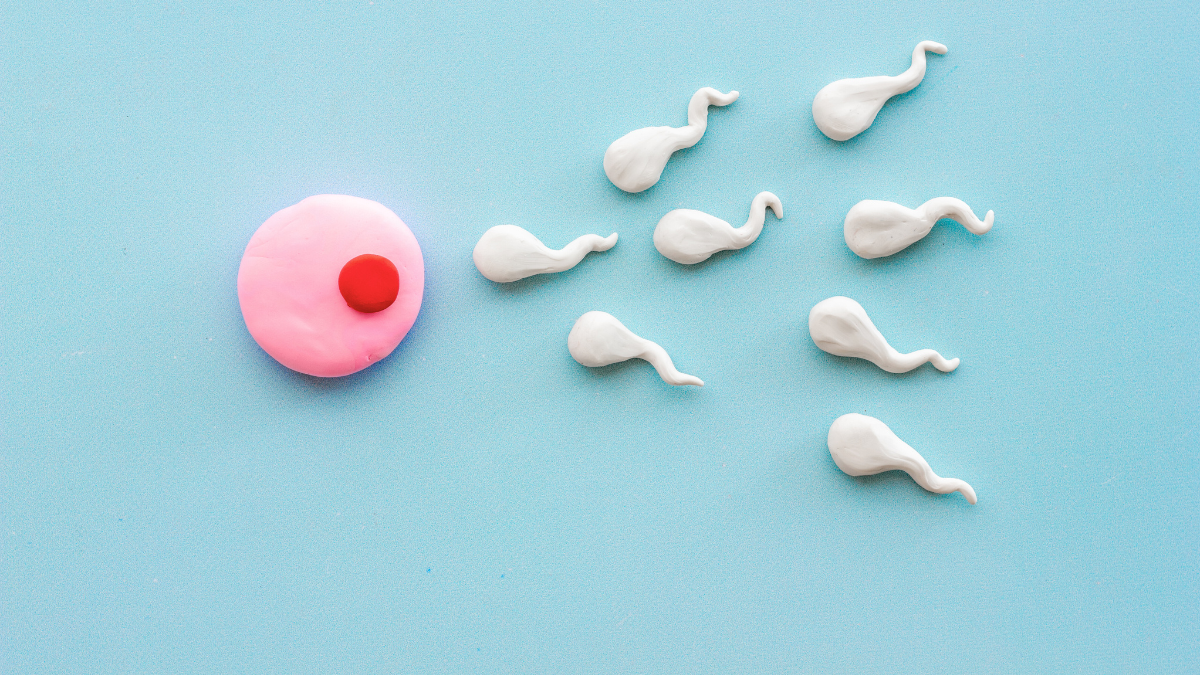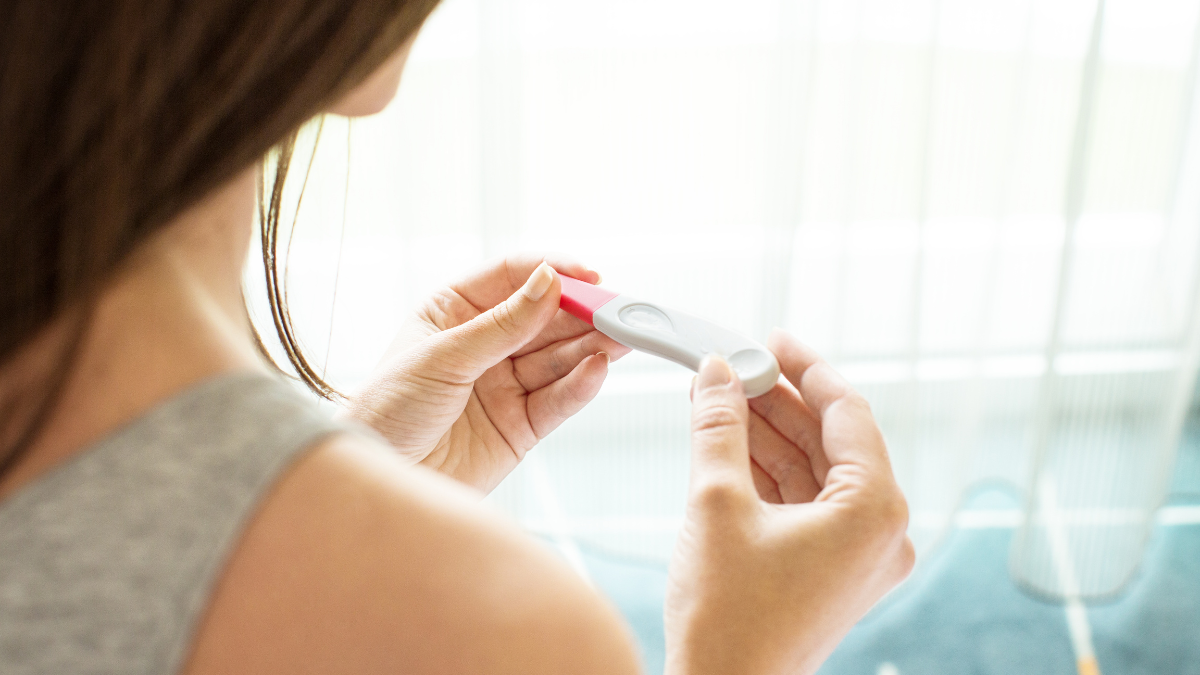Are you dreaming of starting or growing your family but finding it harder than expected? You’re not alone. Many women face fertility challenges today due to stress, hormonal imbalances, or lifestyle factors. If you’re searching for a natural, gentle, and effective way to support your fertility journey, Yoga for Fertility might be exactly what you need.
Yoga for Fertility is more than just physical exercise—it’s a beautiful blend of mindful movement, deep breathing, and relaxation techniques designed to improve your reproductive health. It helps increase blood flow to the reproductive organs, balances hormones, reduces anxiety, and promotes emotional well-being—all of which play a crucial role in enhancing fertility.
In this blog, we’ll explore the Best 7 Yoga poses for fertility that can naturally boost your chances of conception. These carefully chosen poses are simple, effective, and suitable even for beginners.
Get ready to relax, restore, and reconnect with your body as we guide you through these powerful Yoga for Fertility practices that can bring you closer to your dream of motherhood.
Table of Contents
Why Yoga for Fertility Works
Yoga for Fertility isn’t just about stretching or poses—it’s a powerful practice that works on your body, mind, and hormones together. Here’s why it’s so effective for women trying to conceive:
- Improves Reproductive Blood Flow: Yoga increases circulation to the uterus and ovaries, nourishing them with fresh oxygen and nutrients.
- Balances Hormones Naturally: Many yoga poses gently stimulate the endocrine system, helping your body regulate hormones such as estrogen and progesterone.
- Reduces Stress and Anxiety: High stress levels can interfere with ovulation and fertility. Yoga calms the nervous system and lowers cortisol, the stress hormone.
- Strengthens the Pelvic Region: Yoga tones and supports pelvic muscles, improving the alignment and function of reproductive organs.
- Supports Emotional Well-being: The mindfulness in yoga promotes emotional stability, helping you cope with the ups and downs of your fertility journey.

Importance of Yoga for Fertility
Understanding the importance of Yoga for Fertility is essential if you’re trying to conceive naturally. Many women face fertility challenges today due to stress, irregular cycles, hormonal imbalances, and a sedentary lifestyle. This is where Yoga for Fertility plays a powerful role.
Here’s why Yoga for Fertility is so important in your conception journey:
- Reduces Stress, a Major Fertility Blocker:
Stress can severely affect ovulation and reproductive hormones. Yoga calms your nervous system, reducing stress hormones like cortisol that interfere with fertility. - Restores Hormonal Balance Naturally:
Hormonal imbalances often lead to irregular cycles or ovulation issues. Specific yoga poses stimulate glands like the thyroid, pituitary, and ovaries, supporting hormonal harmony. - Improves Blood Circulation to Reproductive Organs:
Many yoga poses promote fresh blood flow to your ovaries, uterus, and pelvic region, enhancing their function and boosting fertility. - Enhances Emotional Well-being:
Trying to conceive can feel overwhelming at times. Yoga helps you stay emotionally centered, reducing anxiety and encouraging a more positive mindset throughout your fertility journey. - Strengthens the Pelvic Floor and Core Muscles:
A strong pelvic region supports reproductive organs, improves posture, and enhances your body’s readiness for pregnancy. - Supports Detoxification:
Gentle twists and stretches in yoga stimulate digestion and aid in detoxifying the body, which can be beneficial for reproductive health.
Yoga for Fertility isn’t just about physical health—it nurtures your mind, body, and spirit together, creating the ideal foundation for conception.
Tips for Best Results with Yoga for Fertility
To get the most from your Yoga for Fertility practice, follow these simple tips for faster and more effective results:
- Be Consistent: Practice regularly—consistency is key to balancing hormones and improving fertility.
- Prioritize Deep Breathing: Focus on your breath with every movement to calm your nervous system.
- Start Slowly: Begin with gentle poses and gradually increase intensity as your body becomes comfortable.
- Practice in a Calm Space: Choose a quiet, peaceful environment for your sessions to avoid distractions.
- Stay Patient and Positive: Fertility yoga is a gentle, gradual process. Trust your body’s natural wisdom.
How Often Should You Practice Yoga for Fertility?
Wondering how frequently you should practice Yoga for Fertility to see results? Here’s a simple guide:
- 4 to 5 Times a Week: Practicing yoga most days of the week gives your body enough time to benefit from the poses.
- 20 to 45 Minutes per Session: A short, focused session is often enough to stimulate fertility naturally.
- Best Times to Practice: Early morning or evening work best when your mind is calm.
- Adjust During Your Cycle:
- Focus on restorative poses after ovulation.
- Avoid intense or inverted poses during the two-week wait or after IVF embryo transfer.
Breathing Techniques for Fertility (Pranayama)
Breathing exercises, or Pranayama, are essential in Yoga for Fertility. They calm your nervous system, regulate hormones, and improve oxygen flow to reproductive organs.
Here are the top breathing techniques to try:
- Nadi Shodhana (Alternate Nostril Breathing):
Balances the nervous system, reduces anxiety, and harmonizes hormones. - Bhramari (Bee Breath):
Relaxes the mind, lowers stress, and encourages emotional balance. - Deep Belly Breathing (Abdominal Breathing):
Stimulates the parasympathetic nervous system, improving reproductive functions and digestion.
Tip: Always practice breathing exercises in a quiet space, seated comfortably with your spine straight for best results.

How Stress Affects Fertility & How Yoga Helps
Many women don’t realize how deeply stress can affect their ability to conceive. Stress doesn’t just impact your mood—it can disrupt your entire reproductive system. If you’ve been struggling to conceive, it’s important to understand the connection between stress and fertility.
Here’s how stress affects your fertility:
- Disrupts Ovulation: Stress can interfere with the hormones that regulate ovulation, making it irregular or stopping it altogether.
- Alters Hormonal Balance: High levels of cortisol (the stress hormone) can suppress reproductive hormones like estrogen and progesterone.
- Reduces Libido: Stress can lower sexual desire, making it harder to conceive naturally.
- Weakens Egg Quality: Chronic stress may even affect egg quality and overall reproductive health.
- Triggers Emotional Strain: Stress often causes anxiety, depression, and feelings of hopelessness, which can create a negative cycle during your fertility journey.
How Yoga for Fertility Helps Break the Stress Cycle:
- Lowers Cortisol Naturally: Yoga activates the parasympathetic nervous system, which lowers cortisol and promotes relaxation.
- Promotes Calmness: Deep breathing and gentle poses calm the mind and ease anxious thoughts.
- Balances Hormones: Yoga supports endocrine function, helping to restore hormonal harmony.
- Improves Sleep: Practicing Yoga for Fertility helps improve sleep, which is crucial for reproductive health.
- Encourages Mind-Body Connection: Yoga teaches you to listen to your body, helping you heal physically and emotionally.
Yoga for Fertility gives your mind and body the safe space they need to relax, restore, and focus on creating a new life. This makes it one of the most powerful natural tools to overcome fertility-related stress.
Common Fertility Issues Yoga Can Help With
Many women face fertility challenges due to underlying health issues or lifestyle factors. The good news is that Yoga for Fertility can provide natural support for several common fertility problems. This gentle practice works by improving circulation, balancing hormones, and reducing stress, which are often at the root of these conditions.
Here are some common fertility issues that Yoga for Fertility can help with:
- Irregular Menstrual Cycles:
Yoga encourages hormonal balance and helps regulate the menstrual cycle naturally. - Polycystic Ovary Syndrome (PCOS):
Certain yoga poses reduce insulin resistance and support hormone regulation, which can improve symptoms of PCOS. - Hormonal Imbalances:
Yoga stimulates endocrine glands, including the thyroid and pituitary, which play key roles in fertility. - Ovulation Disorders:
Gentle yoga practices may help stimulate healthy ovulation by improving circulation and reducing stress. - Unexplained Infertility:
Many women with no clear diagnosis have found that regular fertility yoga helps create a supportive environment for conception by reducing physical and emotional blocks. - Endometriosis Discomfort:
Yoga helps ease pelvic pain and inflammation, which may improve overall reproductive health and well-being.
By practicing Yoga for Fertility consistently, many women notice improvements not only in their fertility but also in their energy levels, mood, and general reproductive health.
What Makes Yoga for Fertility Different From Regular Yoga?
Many women wonder whether they can simply practice regular yoga or if they need a specific Yoga for Fertility routine. While regular yoga offers many health benefits, Yoga for Fertility is specially designed to support your reproductive health and prepare your body for conception.
Here’s what makes Yoga for Fertility unique:
- Focus on Hormone Support:
Fertility yoga uses poses that gently stimulate hormone-producing glands such as the ovaries, thyroid, and pituitary, helping balance reproductive hormones naturally. - Emphasis on Relaxation:
Unlike some forms of yoga that focus on strength or flexibility, Yoga for Fertility prioritizes stress relief, emotional healing, and deep relaxation. - Gentle, Restorative Poses:
Fertility yoga avoids strenuous or high-impact movements and instead focuses on soft, nurturing poses that calm the nervous system and improve circulation to the pelvic area. - Mind-Body Connection:
This practice is designed to deepen your awareness of your body’s fertility signals, helping you become more in tune with your cycle and emotional well-being. - Breathwork for Hormonal Balance:
Breathing techniques (pranayama) are an essential part of Yoga for Fertility, helping to calm your mind and regulate hormones more effectively.
Choosing Yoga for Fertility means you’re focusing specifically on enhancing your reproductive health in a gentle, supportive, and mindful way that regular yoga may not always offer.
Foods & Lifestyle Tips to Combine with Yoga for Fertility
While Yoga for Fertility is a powerful natural tool, combining it with the right foods and healthy lifestyle choices can boost your fertility even more. Nourishing your body from the inside out creates the perfect environment for conception.
Here are some fertility-friendly foods to include in your diet:
- Leafy Greens (Spinach, Kale, Moringa): Rich in iron, folate, and antioxidants that support ovulation and hormonal health.
- Whole Grains (Quinoa, Brown Rice, Oats): Help stabilize blood sugar and promote hormone balance.
- Healthy Fats (Avocados, Nuts, Seeds): Essential for hormone production and overall reproductive health.
- Berries (Blueberries, Strawberries): Packed with antioxidants to protect reproductive cells from damage.
- Lean Proteins (Lentils, Beans, Eggs): Support tissue repair and egg quality.
Fertility-Boosting Lifestyle Tips:
- Stay Hydrated: Drink plenty of water throughout the day to support detoxification and hormone transport.
- Prioritize Sleep: Aim for 7-9 hours of restful sleep to allow your body to restore and regulate hormones.
- Minimize Toxins: Reduce exposure to chemicals in household products, skincare, and plastics, which may affect fertility.
- Manage Stress: Along with yoga, try meditation, journaling, or spending time in nature to keep stress levels low.
- Maintain a Healthy Weight: A Balanced weight supports ovulation and improves fertility outcomes.
Combining these simple lifestyle habits with your Yoga for Fertility routine will not only enhance your chances of conception but also improve your overall health and well-being.

When You Should Avoid Yoga for Fertility
Although Yoga for Fertility is generally safe and gentle, there are certain situations where it’s best to avoid or modify your practice. Listening to your body and knowing when to pause or skip certain poses is very important on your fertility journey.
Here are situations when you should avoid or modify Yoga for Fertility:
- After Embryo Transfer (During IVF Treatments):
It’s usually recommended to avoid yoga during the two-week wait after an embryo transfer. Resting and allowing implantation to occur naturally is best. - High-Risk Pregnancy or Fertility Complications:
If your doctor has advised you against physical activity due to specific fertility concerns or high-risk conditions, avoid yoga until you get medical clearance. - Severe Pelvic Pain or Injuries:
Avoid yoga if you’re experiencing intense pelvic pain, injury, or unexplained abdominal discomfort until a healthcare provider evaluates your condition. - Immediately After Ovulation (for Some Women):
Some women may choose to avoid inversions or strenuous poses after ovulation, especially if trying to conceive naturally, to create a calm and receptive environment for implantation. - If You Feel Dizzy or Unwell:
Always listen to your body. If you feel dizzy, fatigued, or emotionally overwhelmed, skip your practice and rest instead.
Important Reminder:
Always consult your healthcare provider or fertility specialist before starting or continuing any yoga program, especially if you’re undergoing fertility treatments or dealing with specific health concerns.
Yoga for Fertility should always feel safe, gentle, and nourishing, not stressful or strenuous.
Best 7 Yoga Poses for Fertility
Practicing specific Yoga for Fertility poses can naturally improve your chances of conception by increasing circulation to your reproductive organs, balancing your hormones, and reducing stress. Here’s a detailed look at the Best 7 Yoga poses for fertility that every woman trying to conceive should try.
1. Supta Baddha Konasana (Reclining Bound Angle Pose)
This deeply restorative pose opens your hips and increases blood flow to the uterus and ovaries.
- How to Do It:
Lie down on your back. Bring the soles of your feet together and let your knees fall outward. Support your knees with cushions if needed for comfort. - Benefits:
- Opens the pelvic area
- Improves reproductive circulation
- Relaxes the body and reduces stress
- Supports hormonal balance
2. Viparita Karani (Legs Up the Wall Pose)
A calming, simple pose that allows gravity to improve circulation to the pelvic region.
- How to Do It:
Lie on your back with your hips close to a wall and your legs extended upward along the wall. Keep your arms relaxed by your sides. - Benefits:
- Enhances blood flow to the reproductive organs
- Relieves lower back tension
- Calms the nervous system
- Reduces fatigue and stress
3. Bhujangasana (Cobra Pose)
This gentle backbend strengthens the abdominal muscles and stimulates the reproductive organs.
- How to Do It:
Lie face down with your hands under your shoulders. Inhale and gently lift your chest off the floor while keeping your lower body grounded. - Benefits:
- Stimulates the ovaries and uterus
- Strengthens the lower back
- Opens the chest and improves breathing
- Relieves mild anxiety

4. Setu Bandhasana (Bridge Pose)
A highly beneficial pose for improving hormone function and relieving stress.
- How to Do It:
Lie on your back with your knees bent and feet flat on the floor. Inhale and lift your hips toward the ceiling, pressing your feet and arms into the ground. - Benefits:
- Stimulates the thyroid and reproductive glands
- Opens the hips and chest
- Improves circulation to the pelvic region
- Relieves tension and calms the mind
5. Paschimottanasana (Seated Forward Bend)
This calming forward bend stretches the back and improves blood flow to the reproductive organs.
- How to Do It:
Sit with your legs extended straight in front of you. Inhale deeply and, as you exhale, fold forward from the hips, reaching toward your feet. - Benefits:
- Stimulates the ovaries and uterus
- Relieves stress and anxiety
- Improves digestion and metabolism
- Enhances flexibility in the spine and hips
6. Balasana (Child’s Pose)
A deeply relaxing and restorative pose, perfect for calming the mind and body.
- How to Do It:
Kneel on the floor, sit back on your heels, and stretch your arms forward, lowering your forehead to the ground. - Benefits:
- Gently stretches the hips, thighs, and lower back
- Calms the nervous system
- Relieves fatigue and anxiety
- Restores emotional balance during fertility challenges
7. Malasana (Garland Pose / Deep Squat)
This deep squat pose strengthens and opens the pelvic region, improving fertility naturally.
- How to Do It:
Stand with your feet wider than hip-width apart. Squat down deeply, keeping your spine straight, and bring your palms together at your chest. - Benefits:
- Opens and strengthens the hips and pelvic floor
- Improves digestion and detoxification
- Enhances reproductive organ function
- Releases tension from the lower back and groin area
Precautions Before Practicing Yoga for Fertility
While Yoga for Fertility is generally safe, it’s important to follow these precautions to protect your health and enhance your results:
- Consult Your Doctor First: Always check with your healthcare provider before starting a new fertility practice, especially if you’re undergoing treatments.
- Avoid Intense or Inverted Poses After Ovulation: These poses may interfere with implantation or fertility treatments.
- Never Push Into Pain: Yoga should feel comfortable. If a pose causes discomfort or strain, ease out or skip it.
- Skip Overly Strenuous Practices: Fertility yoga focuses on relaxation and hormone balance, not on weight loss or extreme flexibility.
- Listen to Your Body: Rest when needed, and honor your body’s limits throughout your cycle.
Conclusion
If you’re on your journey to motherhood, adding Yoga for Fertility to your daily routine can be a powerful and nurturing step toward boosting your chances of conception naturally. These gentle poses don’t just stretch your body—they help improve blood circulation to your reproductive organs, balance your hormones, and reduce the emotional stress that often comes with trying to conceive.
The Best 7 Yoga for Fertility poses shared in this guide are easy, beginner-friendly, and deeply restorative. When practiced consistently, they can support your reproductive health and bring a sense of calm and confidence to your fertility journey.
Remember, fertility isn’t just about your physical health—your emotional well-being and inner peace also play a crucial role. By combining these Yoga for Fertility practices with a healthy diet, stress management, and a positive mindset, you create a strong foundation for natural conception.
Be gentle with yourself, stay patient, and trust your body’s natural wisdom. With regular practice and self-care, Yoga for Fertility can help you move closer to your dream of becoming a mother—naturally and holistically.







